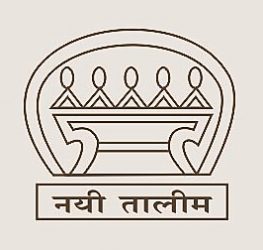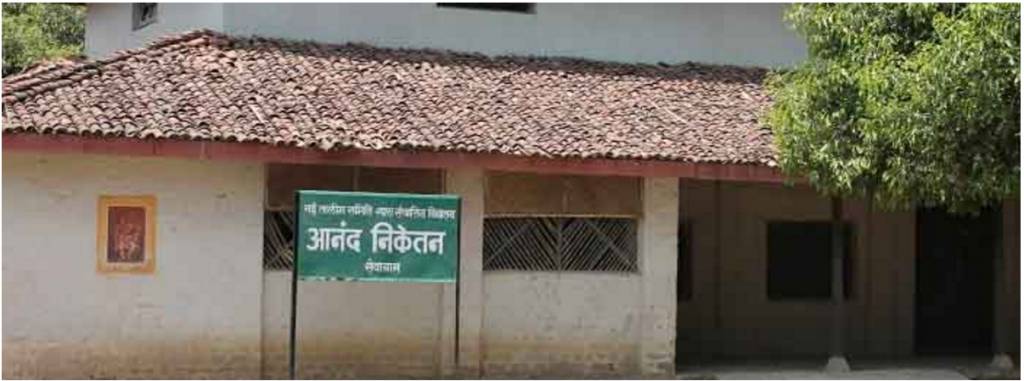Nai Talim
In 1937, Marwadi Shikshan Mandal (Marwari Education Society) was celebrating its silver jubilee. The management conceived the idea of calling on the occasion a small conference of like minded educationists to discuss the plan of education Gandhiji was endeavouring. The Secretary,
Shri Shriman Narayan Agrwal, consulted Gandhiji with the desirability of convening such a conference and asked him to preside it. As Gandhiji liked both of these ideas, the conference was held at Wardha on October 22nd and 23rd. Gandhiji approached the task with confidence but in all humility, with an open mind and with the will to learn and to revise and correct his views whenever necessary. He proposed his ideas of education at the conference for consideration as they had appeared to him at that point in time.
Participants of the conference openly shared and discussed their views on the scheme proposed by Gandhiji. At the end of day one following resolutions were made for discussion on day two.
1. That is the opinion of this conference free and compulsory education be provided for seven years on a nationwide scale.
2. That the medium of instruction be the mothertongue.
3. That the Conference endorses the proposal made by Mahatama Gandhi that the process of education throughout this period should centre round some form of manual and productive work, and that all the other abilities to be developed or training to be given should as far as possible, be integrally related to the central handicraft chosen with due regard to the environment of the child.
4. That the Conference accepts that this system of education will be gradually able to cover the remuneration of the teachers.
At the end of day two, the resolutions were put to vote and they were all but unanimously accepted, Prof. Shah not accepting only the self supporting part of the resolutions.
A committee composed of the following people was appointed to prepare a detailed syllabus on the lines of the resolutions, to submit their report to the chairman of the Conference within a month:
1. Dr. Zakir Hussain (Chairman)
2. Sjt. Aryanayakam (Convenor)
3. Sjt. Khwaka Gulam Saiyddin
4. Sjt. Vinoba Bhave
5. Sjt. Kakasaheb Kalelkar
6. Sjt. Kishorlal Mashruwala
7. Sjt. J. C. Kumarappa
8. Sjt. Shrikrishnadas Jaju
9. Sjt. K. T. Shah
10. Shrimati Ashadevi
With the power to co-opt more names.
The committee submitted their report with detailed syllabus on December 2, 1937. (The report can be seen at the following link)
Later, the Indian National Congress passed the same resolution (except the last point – self-supporting) at its Haripura Session in 1938 and requested Dr Zakir Hussain and Shri E. W Aryanayakam to take immediate steps, under the advise and guidance of Gandhiji, to bring an All India Education Board into existence, in order to work out in a consolidated manner a programme.
Gandhiji’s Ideas on Education
1. The present system of education does not meet the requirements of the country in any shape or form. English having been made the medium of instruction in all the higher branches of learning, has created a permanent bar between the highly educated few and the uneducated many. It has prevented knowledge from percolating to the masses. The excessive importance given to English has maimed them mentally for life and made them strangers in their own land. Absence of vocation training has made the education class almost unfit for productive work and harmed them physically. Money spent on primary education is a waste of expenditure in as much as what little is taught is soon forgotten and have little or no value in terms of the village or cities. Such advantage as is gained by the existing system of education is not gained by the chief taxpayer, his children getting the least.
2. The course of primary education should be extended at least to seven years and should include the general knowledge gained up to the matriculation standard less English and plus substantial vocation.
3. For the all round development of boys and girls all training should, so far as possible, be given through a profit yielding vocation. In other words, vocation should serve a double purpose – to enable the pupil to pay for his tuition though the product of his labour and at the same time to develop the whole man or woman in him or her, through the vocation learnt at school. Land, buildings and equipment are not intended to be covered by the proceeds of the pupil’s labour. All the Processes of cotton, wool and silk commencing from gathering, cleaning, ginning (in case of cotton), carding, spinning, dyeing, sizing, warp making, double twisting, designing, and weaving, embroidery, tailoring, paper making, cutting, bookbinding, cabinet making, toy making, gur making are undoubted occupations that can easily be learnt and handled without much capital outlay.
This primary education should equip boys and girls to earn their bread by the State guaranteeing employment in the vocations learnt or by buying their manufacturers at prices fixed by the State.
4. Higher education should be left to private enterprise and for meeting national requirements whether in the various industries, technical arts, belles letters or fine arts. The State Universities should be purely examining bodies, self supporting though the fees charged for examination. Universities will look after the whole of the field of education and will prepare and approve courses of studies in the various departments of education. No private school should be run without the previous sanction of the respective Universities. University charters should be given liberally to any body of persons of proved worth and integrity, it being always understood that Universities will not cost the State anything except that it will bear cost of the running a Central Education Department.
The foregoing scheme does not absolve the State from running such seminaries as many be required for supplying State needs.
It is claimed that if the whole scheme is accepted it will solve the question of the greatest concern to the State – training of its youth, its future makers.
Harijan, 2-10-1937


